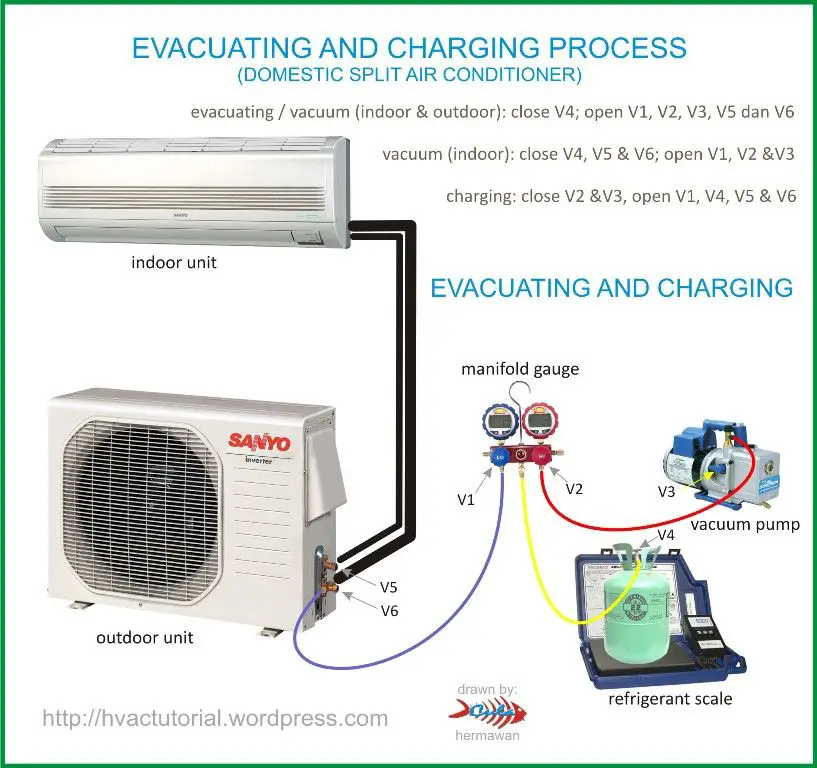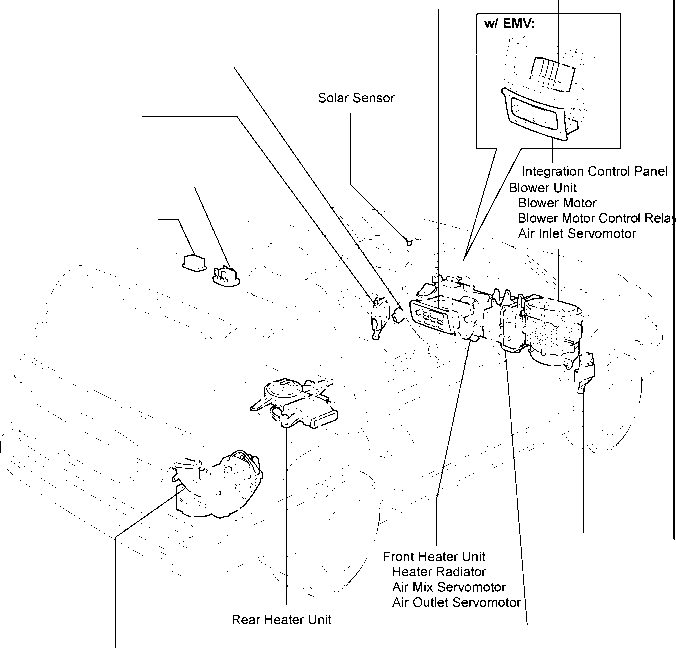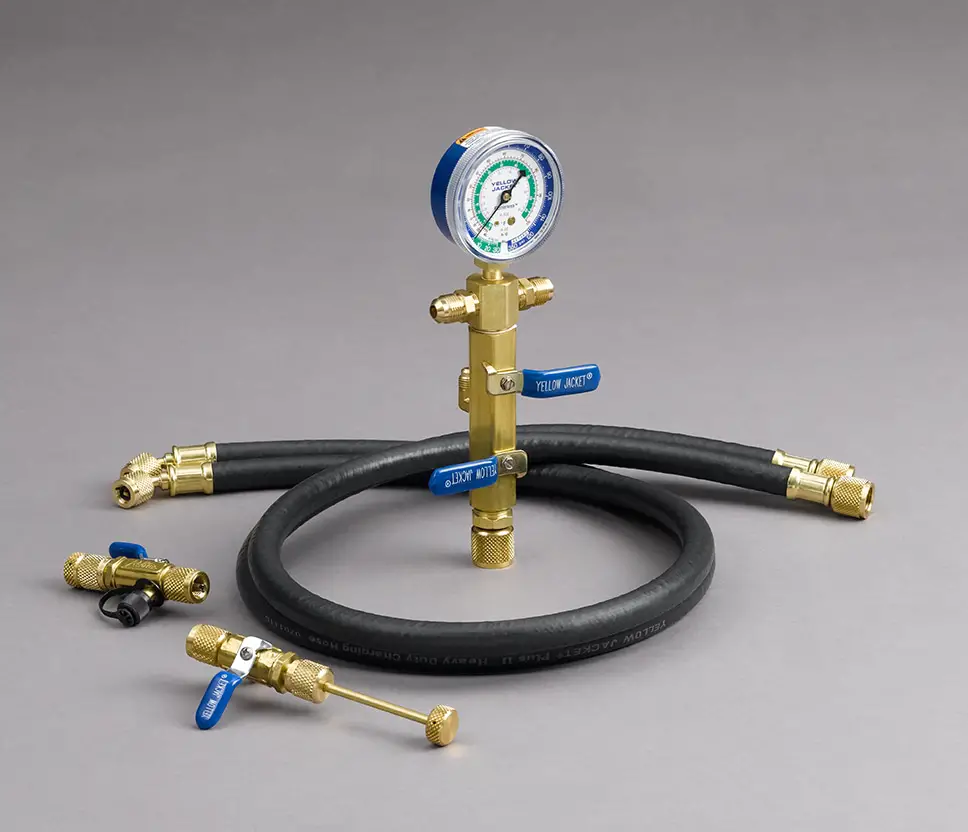Remove Air And Moisture From The Ac System
Opening the blue valve on the recovery tank gradually while keeping a watch out for leaks. Then, to drain liquid from the AC system, open the blue liquid valve on the manifold gauges. Open the red vapor valve on the manifold gauges when you’re finished.
The system of the car should now be completely evacuated. Wait until the manifold gauges reach zero, which should take 30-45 minutes, before stopping the evacuation operation. A readout below zero indicates that the system can maintain a vacuum, which is better .
Why Is Car Detailing So Hard
Car detailing takes some time to master because, it takes a lot of time and hard work to really get a car looking as good as new inside and out. There are many different areas a car detailer must really pay attention to, such as the paint, chassis, wheels, headlights, and trim, and of course, the inside of the car.
When To Evacuate The Ac System
- After changing your AC compressor
- Before replacing the refrigerant
- After repairing or replacing any component of your AC system
- Air vents are blowing warm/hot air
- After discovering and fixing an AC/refrigerant leak
- When the AC system consumes too much power or becomes contaminated
- Noticeable icing at low-temperature points
- When any of the AC components are exposed to air
Also Check: How Much Should I Pay For A Car
How To Evacuate And Recharge A/c System
One of the focal points of repairing a cars A/C system is learning to evacuate moisture and to recharge the system when needed. You must follow a few tips to help you do the process on your own. Read on to find out more about how you can accomplish the task.
Evacuating the A/C System
The first thing you must do is to connect the gauges to the low and high pressure sides of the system. Just like vacuuming a system, the manifold gauges will indicate that you need to connect the red hose to the high-pressure side and the blue hose to the low-pressure side. The service line or the yellow one should be used to put and pull things into and out of the system.
After making the necessary connections, you can now purge the system using compressed nitrogen. This can help check for leaks in the system. In case you do not have compressed nitrogen, you do not have to worry. You just have to do some deep vacuuming of the system to evacuate the moisture that has been bugging the system down.
Adding Oil to the Compressor
Recharging the A/C
Open the valve where the refrigerant can should be and make the necessary purging of the line accordingly. Place the refrigerant liquid into the open valve on the low side of the manifold gauge. Make sure that the high side valve is not open. You may need to repeat the process sup to three times to fill the entire A/C system. This will depend on the system requirements and it will help if you check the manual.
Let The Refrigerant In

When charging your AC system, start the engine and turn the AC to its highest coldness and fan speed settings. Once done, partially open the blue, low-pressure side to let the refrigerant in. Never open the high-pressure side, as its only meant for monitoring. The compressor should turn on once the refrigerant enters the AC system. Readings on the low-pressure side of the manifold gauge would also simultaneously rise and fall.
Conversely, you may notice the high-pressure gauge reading steadily rising. When this happens, have a buddy slightly raise the engine idle slightly and use a garden hose to spray water over the condenser to cool it down .
Let the refrigerant flow into the system and keep doing this until youve achieved the recommended amount of refrigerant for your cars system.
You will know your cars AC system is fully charged when your manifold gauge readings look a certain way and the AC compressor stops its on-and-off cycle. Otherwise, the system may be overcharged, theres a blockage in the expansion valve, or you have a busted cooling fan.
Recommended Reading: How Big Is A Two Car Garage
Install An Access Valve
Another way you can evacuate your vehicles AC is by installing an access valve on both the low and high-pressure ends of the system. Once set up, depress the access valve on the high-pressure side while letting pressure on the low-side drop to near-zilch or the lowest point possible.
Charge the low-pressure side to 14 psi. Wait for pressure readings on both sides to equalize. Monitor this for approximately three minutes at a time, then repeat depressing the high-pressure end, charging the low-pressure side, and allowing the pressure readings to align. Youll know youre doing the procedure right if the low-pressure reading doesnt drop as low as it initially did.
Word to the Wise: You may stumble across some vehicle owners in forums advising to evacuate the AC system by opening up the high-pressure lines, starting the motor, and allowing the vehicles own compressor to vacuum down the system. While this idea may sound tempting, it wouldnt work at all .
Closed System
Remember that your cars AC system is a closed system. Leaving its high-pressure side open will only leave a significant amount of air in it, defeating the purpose of needing to discharge the system, to begin with. This method makes it impossible to fill the AC system with a full refrigerant charge.
Additionally, the remaining air and moisture end up contaminating the dryer. As a result, temperature and pressure differential become significantly reduced and cooling efficiency less than acceptable.
Air Conditioning Evacuation: Not Just Testing For Leaks
One of our favorite Go-to-a-licensed-professional-for-AC-system-charging stories involves a guy we spent more time than we care to admit troubleshooting before it became apparent that he was releasing the vacuum before charging. His thinking: I checked for leaks, now Im moving on to the next step. He was not only evacuating and charging without a license but without any understanding of what he was doing. Please, if you are not a licensed AC professional, do not evacuate/charge on your own. Go to a licensed professional. Its worth it to get it done right. That said, weve run into many experienced car guys who dont really understand evacuation and decided a quick summary would be helpful to even license AC professionals.
AC system evacuation serves three purposes:
Evacuation Purpose #1: Initial Leak Check If everything is in order when you evacuate an AC system, the low side should reach a minimum of 28-30 Hg within a short period.
What does low side mean? If you are asking this question, you shouldnt be charging the system. Go to a licensed professional. But because youre wondering, AC systems operate off pressure change. The high or high-pressure side is from the compressor to the expansion valve. The low or low-pressure side is from the expansion valve through the evaporator and back to the compressor.
To summarize proper AC system evacuation:
Don’t Miss: Will Aaa Tow My Car To My House
How To Flush A Car Ac System
While performing an AC System flush can certainly be done by the DIYer, you may want to leave this one to the professionals. A/C compressor replacements are costly and by performing a flush yourself, you risk damaging the system and potentially causing even more damage, which will result in more money for repairs.
Why Do I Need To Discharge My Car Ac
There are a few reasons why you might need to discharge your cars AC system. One common reason is that your cars AC compressor may have failed and needs to be replaced. In this case, its necessary to completely discharge the old Freon from your system before adding fresh Freon.
Another reason you might need to discharge your cars AC is if youre planning on performing some major repairs on your systems, such as replacing the evaporator or condenser. Again, its important to completely discharge the old Freon before adding any new Freon to your system.
Finally, if your cars AC isnt cooling as well as it used to, it might be necessary to partially discharge and then recharge your system with fresh Freon. This can help improve the efficiency of your cars AC and make it feel cooler in the summer months.
You May Like: How To Get The Best Price On A Used Car
Can I Discharge My Car Ac Without A Vacuum Pump
Yes, it is possible to discharge your car AC without a vacuum pump. However, its important to note that this should only be done if youre comfortable working with refrigerants and have the proper tools.
Additionally, discharging your cars AC without a vacuum pump can be dangerous and may damage your cars AC system.
How To Evacuate Car Ac System
Disclosure: We may get commissions for purchases made through links in this post.
Evacuating a cars AC system is an important skill. It ensures the air conditioning is in tip-top shape for those long weekend drives. However, some drivers veer away from doing this themselves, fearing that theyre not adept enough. This guide aims to counter this notion by providing more information on the maintenance procedure and proving how easy it is. So, how do you evacuate your cars AC system?
Knowing how to evacuate an AC system is crucial to the upkeep of your vehicle. It entails using proper equipment like a vacuum pump, AC recovery unit, and manifold gauges and requires stringent adherence to OEM-recommended steps. It takes 30 minutes to an hour to complete the entire process.
Here are the 10 steps on how to evacuate the AC system of a car:
There are many downsides to not evacuating and discharging your vehicles AC. This includes restricted refrigerant flow and severe damage to AC components. At best, you would find yourself profusely sweating when driving for long hours.
Continue reading to learn how to evacuate your cars AC.
Also Check: What Car Payment Can I Afford Calculator
What Is A Car Ac System Flush
An A/C system flush is a necessary procedure to ensure the air conditioning system is clean and free from any contaminants. Any foreign objects in the AC system can cause blockages and prevent the compressor from operating efficiently. Even the smallest amount of foreign debris in the system can restrict the flow of refrigerants and oil.
Your vehicles engine needs oil to keep moving parts lubricated and to prevent failure. Similar to the engine, the air conditioning compressor, the only moving component within the system, requires oil to prevent failure.
Oil travels throughout the system carried by the refrigerant and has direct contact with the condenser, accumulator, hoses, evaporator, and tubes. If any debris particles enter the system, all components are at risk for damage. Flushing the AC removes the contamination and protects vital A/C parts.
Be sure to have the AC flushed if the system is contaminated or whenever the AC compressor is removed or replaced in your vehicle.
Topping Off Versus Evacuation And Recharge

A top off involves adding refrigerant to your MVAC. There is no way for technicians to determine how much refrigerant is in your MVAC system when you arrive at the shop, so they must guess how much refrigerant to charge into the system. They may undercharge or overcharge the systemboth of which impair system performance.
Evacuation and recharge service involves removing the MVAC refrigerant, cleaning it using recycling equipment , recharging it into the system, and adding new refrigerant to replace the amounts that have leaked out. Evacuation and recharge service allows technicians to add the precise amount of refrigerant recommended by the MVAC manufacturer.
Some technicians believe that evacuation and recharge is better for MVACs because the refrigerant is cleaned before being recharged. However, there is no reason to clean the refrigerant unless technicians open the system. Opening a system means any service, maintenance, or repair that could release ozone-depleting refrigerant. When technicians repair or replace system components, they should recycle the refrigerant.
You May Like: Does Walmart Install Car Stereos
How To Vacuum Car Ac System Without Pump
If there are leaks in the system, the refrigerant gas contaminates the environment and causes the air to become stale.
This situation is likely to cause respiratory diseases or allergies in the passenger compartment as a result of bad odors.
In this article, I will show you how to vacuum car ac system without pump, lets get down to work.
Contents
Do Ac Compressors Come With Oil In Them
In many cases, AC compressors are pre-filled with enough oil to power the complete AC system. New AC compressors typically arrive packed with oil.
They naturally contain the proper kind and quantity of oil to keep the air conditioner running for an extended period of time. However, before installing the AC compressor, make sure it has enough pre-filled oil to prevent any damage.
Recommended Reading: How To Check Lien On Car
How Do I Evacuate My Car Ac Without A Pump
Place one end of a length of clear plastic tubing over the valve on the can of Freon. Cut the tubing at an angle so that when it is placed over the valve, the tubing points downward. Attach the other end of the tubing to the low pressure port on your car AC unit. Turn on your car AC unit to its highest setting.
How To Remove Freon From Car At Home
To remove Freon from the car, you dont need to be a professional car mechanic, But you have to be careful. If you can take some steps properly, you will be able to drain Freon from car at home.
Knowing how to remove Refrigerant from car ac will let you learn more about your car air conditioner. Removing Freon from the car at home is a DIY skill that will save you money and give you more insights about your car A/C.
You May Like: How To Know If Car Battery Is Dead
Read Also: Can I Ship My Car To Another State
What Are The Safety Measures Of Discharging Car Ac
There are a few things that you need to keep in mind when discharging your car AC at home.
- First, make sure that you have all the necessary tools and equipment before you get started.
- Second, always follow the instructions that come with your AC system.
- Third, be very careful when handling refrigerants. Fourth, make sure that you dispose of any used refrigerants properly.
- Lastly, if you are not comfortable with doing this yourself, it is always best to consult with a professional.
How Do I Remove Refrigerant From My Car Ac
Prices pulled from the Amazon Product Advertising API on:
Product prices and availability are accurate as of the date/time indicated and are subject to change. Any price and availability information displayed on at the time of purchase will apply to the purchase of this product.
There are a few ways that you can remove refrigerant from your car AC. One way is to use a vacuum pump, which will suck the refrigerant out of your system. The following are steps for removing refrigerant using a vacuum:
Don’t Miss: What Size Wheels Are On My Car
What Is The Purpose Of Evacuation
Refrigeration systems are designed to operate with only refrigerant and oil circulating inside them. When systems are assembled or serviced, air enters the system. Air contains oxygen, nitrogen, and water vapor, all of which are detrimental to the system. Removing air and/or other non-condensable gases from a system with a vacuum pump is called degassing a system. Removing water vapor from a system is known as dehydration. In the HVAC industry, the process of removing both air and water vapor is referred to as Evacuation.
How Much Does It Cost To Evacuate Ac System

It takes about an hour and 12 of labor along with the dye and Refrigerant needed to evacuate a system with dye added and can range from about $180.00 to over $300.00 depending on how much freon/refrigerant is needed.
What happens if you put too much oil in your AC compressor? If you add too much oil to the system, it may pool in various places of the system and can coat the inner walls of the evaporator and condenser coils. This will diminish their ability to absorb or dissipate heat, thereby bringing down the overall cooling performance.
Does a vacuum pump remove freon?
No. You can not use a vacuum pump to properly recover refrigerant gases because a vacuum pump does not have a compressor to reduce the gas recovered to a liquid in order to store it in the recovery bottle.
Should I add oil when replacing AC condenser? When replacing a part like the condenser it is a good idea to add some extra oil with the new refrigerant. Most refrigerants do have some oil in them which should be enough. The majority of the oil in the system stays in the compressor so you should not have any issues if you do not add any more.
Also Check: What Is A Finance Charge On A Car Loan
